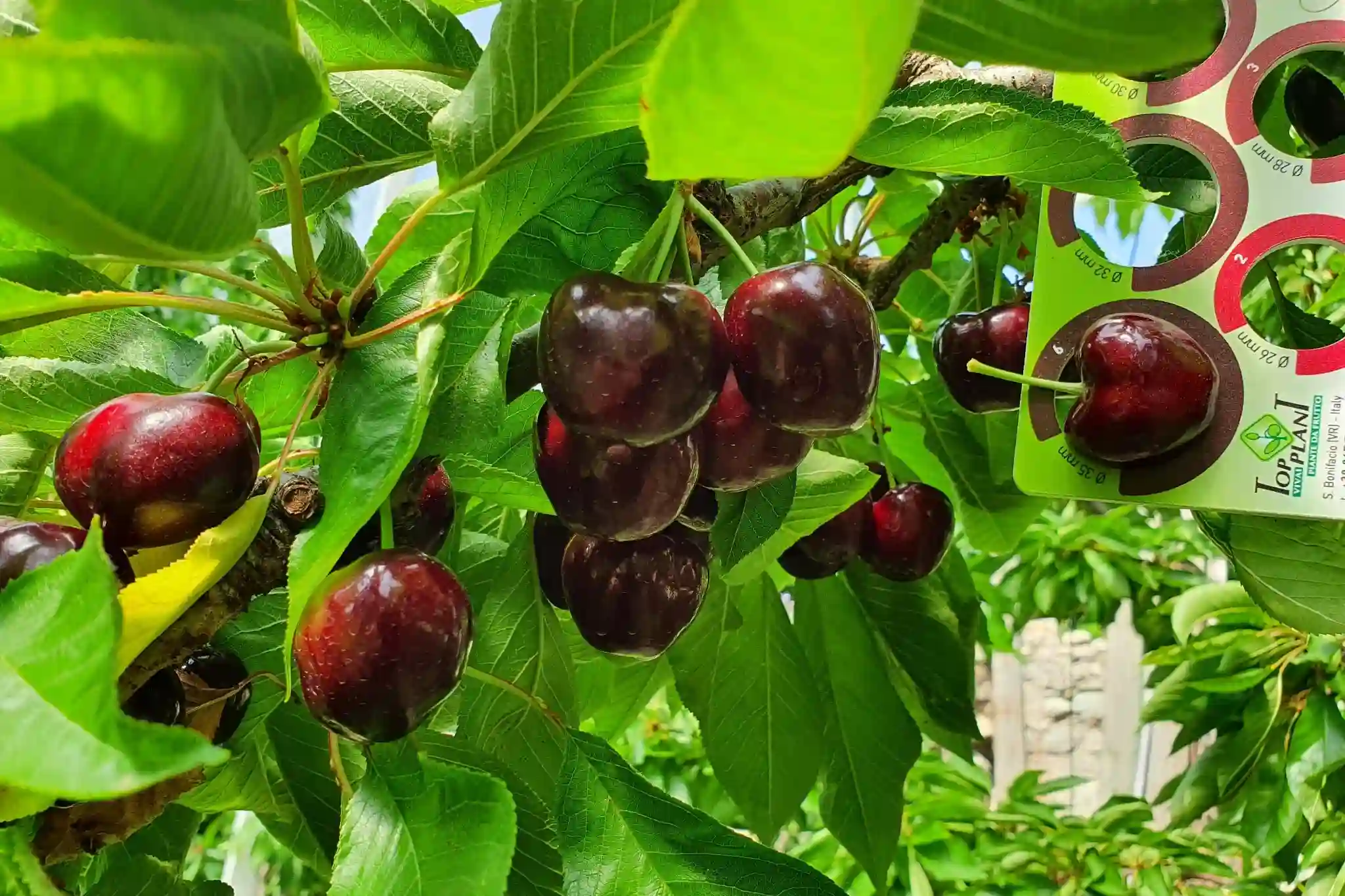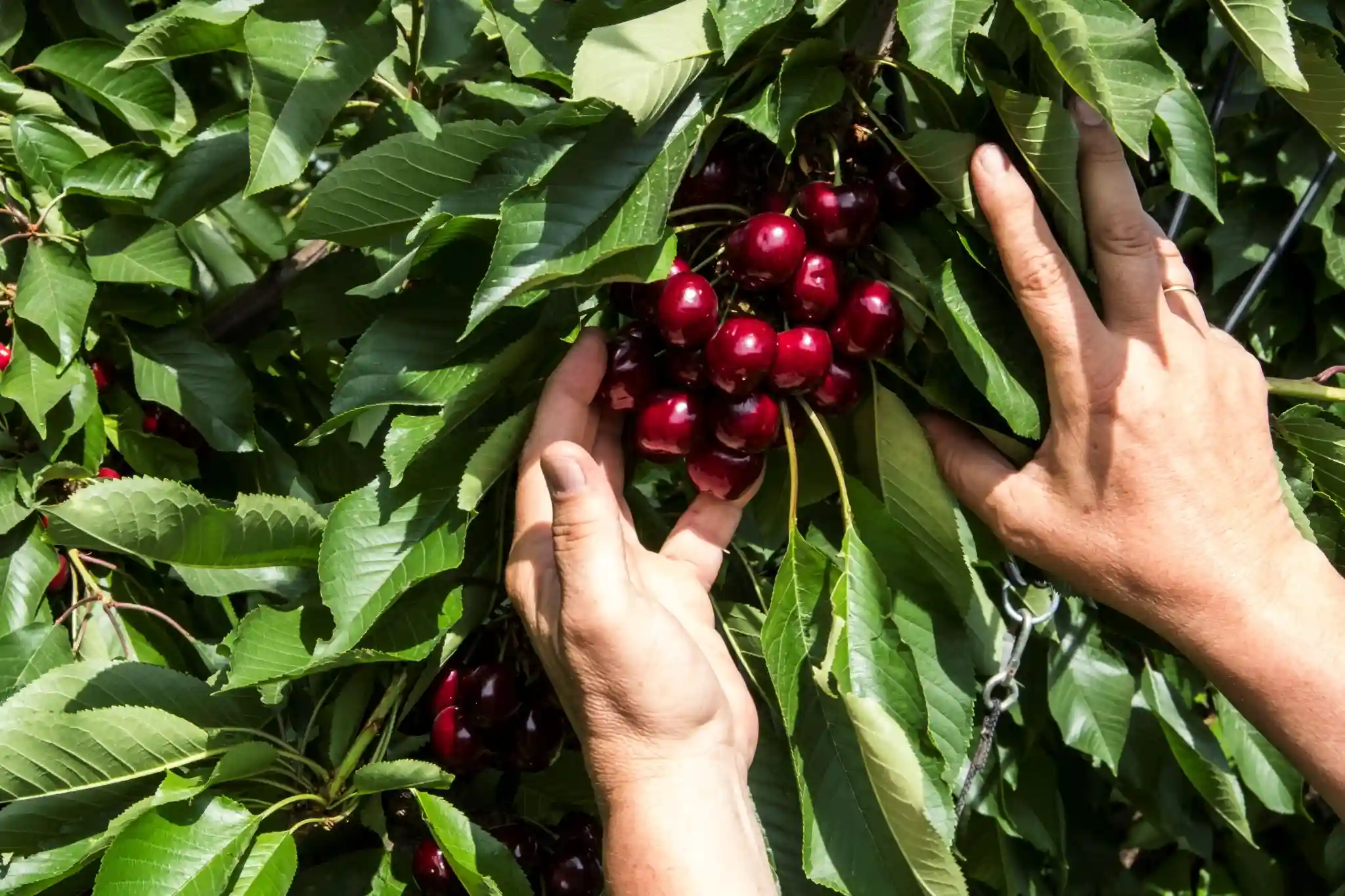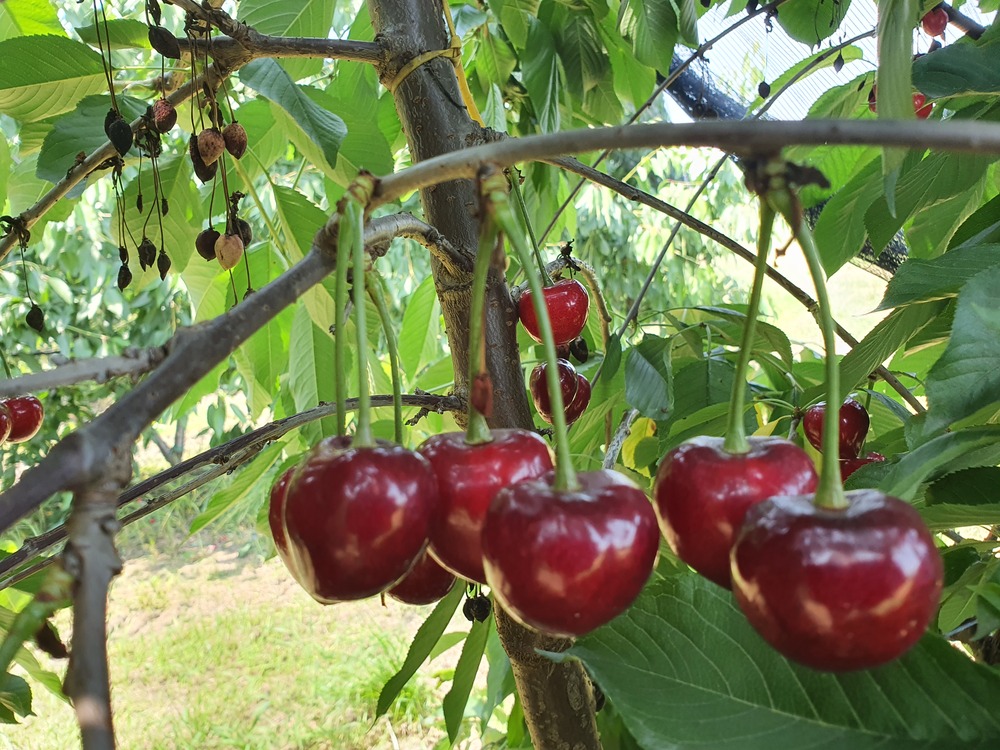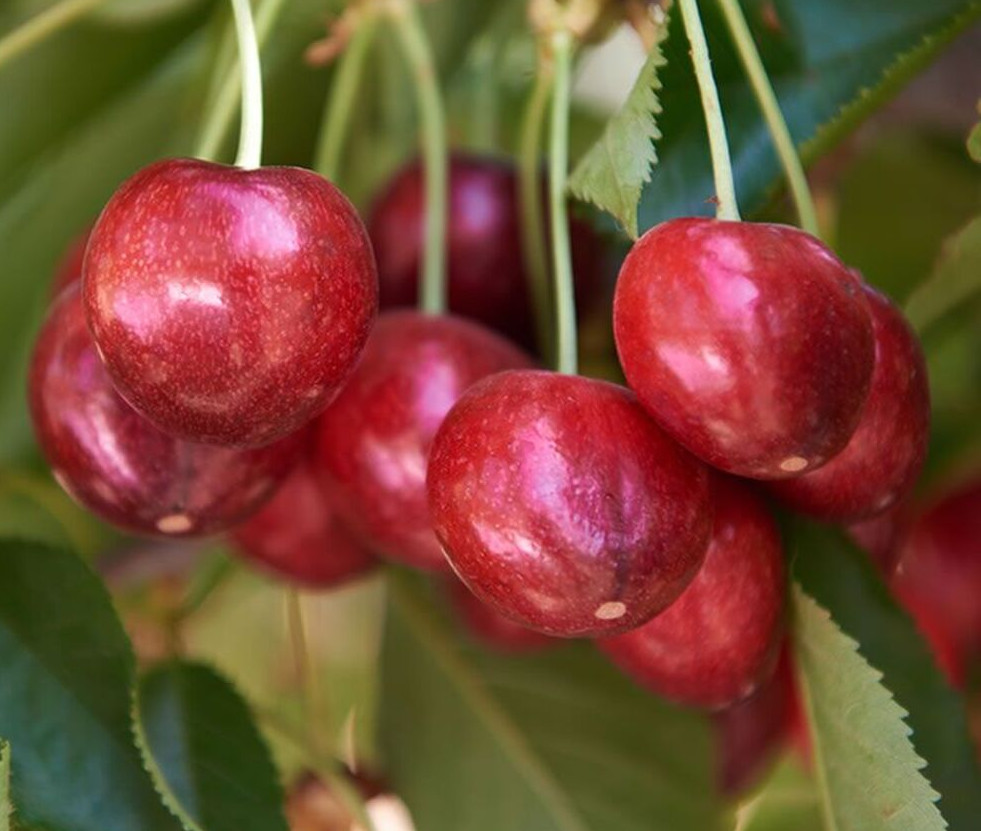A study conducted between 2023 and 2024 in Moldova analyzed the agronomic performance of five sweet cherry cultivars — “Kordia”, “Regina”, “Summit”, “Sweet Saretta”, and “Sweet Stephany” — grafted onto the dwarfing rootstock “Gisela 6” and grown in a super-intensive orchard located in the northern region of the Republic of Moldova, specifically in Sturzeni, Riscani district.
The orchard, established in 2018 with a 4x1 m planting system (density of 2500 trees/ha), adopted a modern slender spindle training system with north-south row orientation, drip irrigation, anti-hail netting, grass-covered inter-rows, and tilled in-row soil.
The primary objective of the study was to evaluate differences in productivity, fruit quality, and technological traits according to cultivar.
Yield and cultivar performance
The findings showed a clear yield advantage for “Summit”, “Sweet Saretta”, and “Sweet Stephany” varieties, which achieved average yields between 18.38 and 19.59 t/ha, compared to “Kordia” and “Regina”, whose yields ranged from 12.71 to 13.22 t/ha.
Tree productivity followed a similar trend: in the sixth year after planting, the most productive cultivars reached 8.27 – 9.12 kg/tree, while “Kordia” and “Regina” remained at 6.85 and 5.72 kg/tree, respectively.
 Image 1. Sweet Stephany
Image 1. Sweet Stephany
The quality data further confirmed the superiority of certain cultivars over others: fruits of “Sweet Stephany” and “Summit” showed larger sizes, 30.82 mm and 30.48 mm, greater weights, 12.11 g and 11.92 g, and high levels of soluble solids, 19.05% and 18.93 %Brix, which are all essential parameters for fresh market sales, especially in Europe.
Flesh firmness (measured with an AGROSTA 100) was optimal across all cultivars, ranging from 3.04 to 3.29 kg/cm², with slightly higher values in “Sweet Saretta” and “Regina”.
Titratable acidity showed only minor variations between cultivars, ranging from 0.57 to 0.67 g of malic acid per 100 g of fresh fruit.
 Image 2. Sweet Saretta
Image 2. Sweet Saretta
Implications and strategic value
The study demonstrates that varietal selection plays a decisive role in the economic success of modern sweet cherry orchards, directly influencing yield, visual and sensory fruit quality, and commercial suitability.
The “Summit”, “Sweet Saretta”, and “Sweet Stephany” cultivars, thanks to their high and stable performance, are particularly well-suited to super-intensive cultivation systems in Moldova and offer a strong response to the current market demand, increasingly oriented toward large, sweet, firm, and visually attractive fruits.
Yield differences between cultivars were found to be statistically significant, even when considering annual fluctuations due to climatic factors.
Moreover, it is important to emphasize that the integration of proper varietal choice, advanced agronomic practices, and precision input management are key elements for the future of cherry cultivation, enabling both high yields and excellent fruit quality.
In this context, sweet cherry growing can remain a strategic option for modern horticulture in favorable pedoclimatic environments.
The results of this study provide valuable guidance for agronomists, consultants, and agricultural entrepreneurs involved in planning new sweet cherry orchards, particularly in Moldova.
Fonte: Bălan, V., Russu, S., & Bilici, I. (2024). The yield, quality and utilization of sweet cherries. Annals of the University of Craiova, Biology, Horticulture, Food products processing technology, Environmental engineering, 29(65).
Andrea Giovannini
University of Bologna (ITA)
Cherry Times - Tutti i diritti riservati














